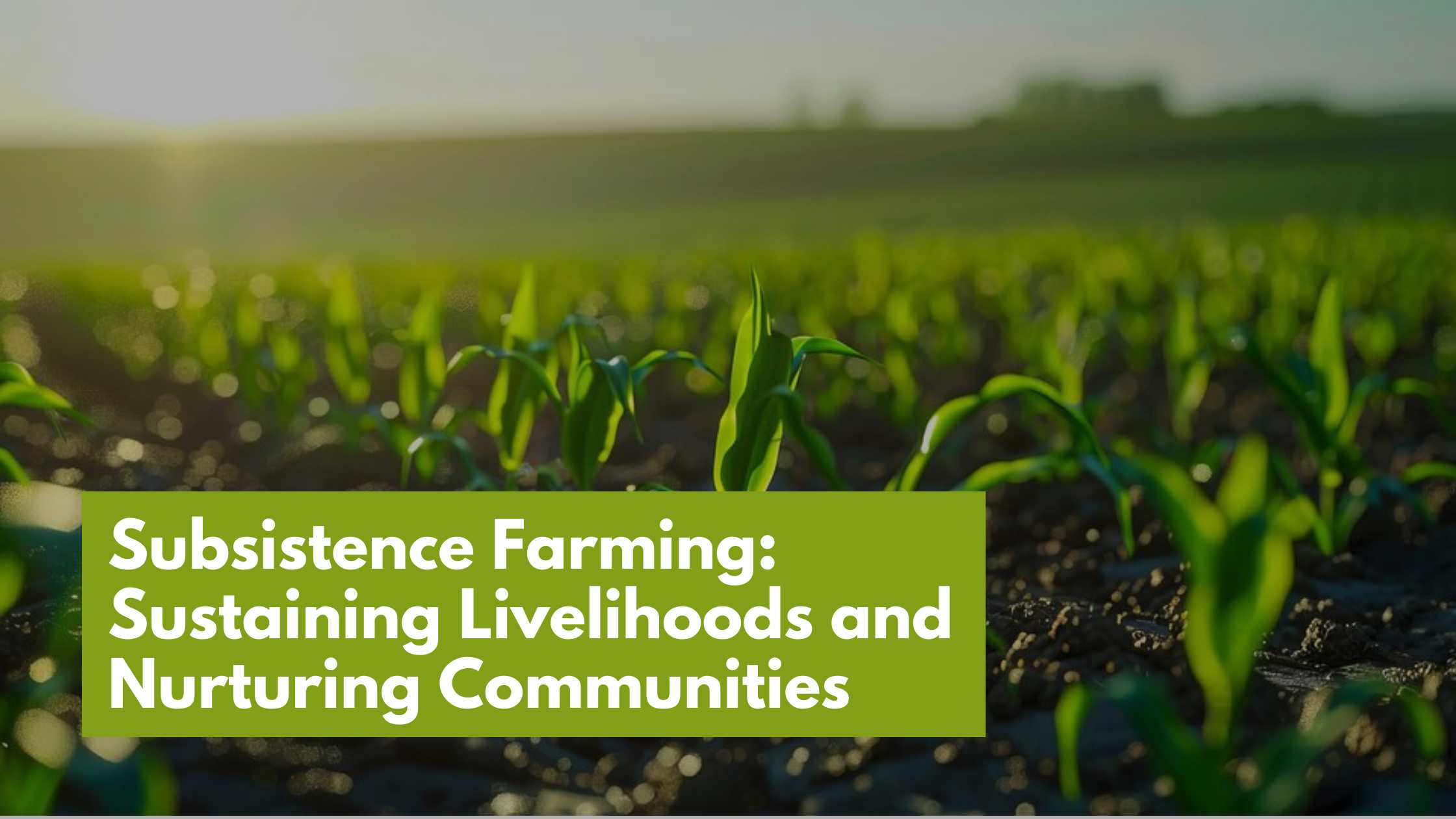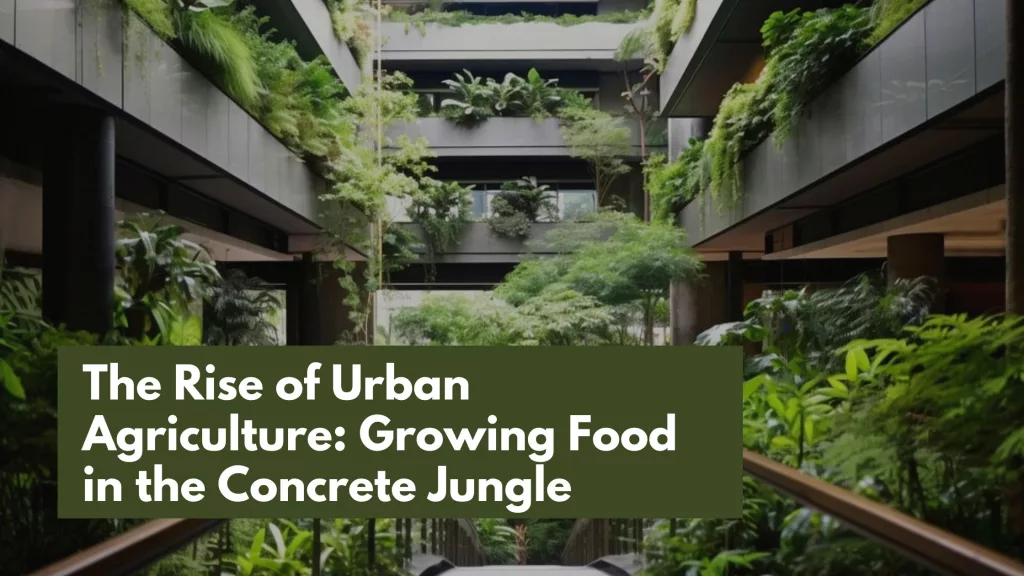Subsistence farming is an essential activity that is based on self-sufficiency, community resilience, and cultural identity in the complex world of global agriculture. Subsistence farming is centered around providing for the fundamental requirements of farmers and their families, as opposed to commercial agriculture, which places a higher priority on profit through surplus production for market sale. This essential difference influences not just the farming practices used but also the socioeconomic and cultural makeup of societies all across the world.
Defining Subsistence Farming
A farming style known as subsistence farming is one in which farmers cultivate crops and raise livestock primarily for their household’s nutritional needs. This approach frequently makes use of basic instruments and time-honored methods that have been modified for the regional climate. It is distinguished by its emphasis on resistance to external market changes and food security as opposed to yield maximization and profit margin maximization. The primary source of food, fiber, and occasionally fuel for the farming household is usually provided by the produce and livestock raised on subsistence farms.

Contrasting with Commercial Agriculture
Commercial agriculture, in contrast to subsistence farming, is larger-scale and primarily focused on producing excess for local, national, or international markets. To increase output and profitability, commercial farms frequently use machinery, extensive insect and fertilizer applications, and specialist crop varieties. This strategy influences agriculture policies and commercial ties between nations by integrating with global supply chains and market dynamics.
Key Pillars of Subsistence Farming
- Local Economies: By supporting rural livelihoods and generating revenue and jobs, subsistence farming is essential to local economies. For a sizeable section of the populace, subsistence farming is the main source of income in many developing nations where it is practiced. Even though it might bring in less money than commercial agriculture does, it helps stabilize the local economy. It lessens reliance on outside food assistance during hard times.
- Food Security: Ensuring food security for agricultural households is the main goal of subsistence farming. Subsistence farmers raise a wide variety of crops and livestock to reduce the likelihood of food shortages brought on by unstable markets, crop failures, or outside events. For communities to retain dietary diversity and adequate nutrition, food production must be self-sufficient. This is especially true in isolated or marginalized areas where market access is restricted.
- Cultural Heritage: Indigenous knowledge systems, rituals, and cultural traditions are frequently intricately entwined with subsistence agricultural techniques. Agricultural methods have been passed down through generations among different areas and ethnic groups, forming cultural identities and strengthening links within the community. A healthy relationship between humans and the environment, based on respect for nature’s rhythms and cycles, is shown in the use of traditional seed types, agricultural methods appropriate for the ecosystems in the area, and collective land management strategies.
Types of Subsistence Farming
1. Subsistence Agriculture
– Shifting Cultivation (Slash-and-Burn): This method, which is practiced in tropical areas, entails slicing and burning vegetation to make way for planting. The land is left fallow to regrow after a few years.
– Intensive Subsistence Agriculture: This type of farming is popular in densely populated areas. Farmers use basic tools to cultivate small plots of land intensively, and they frequently depend on family labor.
– Nomadic herding: This is a pastoralist practice in which farmers use marginal land unsuitable for crop cultivation to move cattle seasonally in search of new pastures.
2. Subsistence Fishing and Hunting:
– Getting fish and other aquatic resources from rivers, lakes, and ponds.
– Hunting and gathering: Forage for food by collecting wild plants, fruits, and nuts and by hunting wild animals.
The Role of Subsistence Farming Today –
Food Security and Resilience
In many isolated and rural areas, particularly in developing nations, subsistence farming is still essential to guaranteeing food security. Families depend on locally raised livestock and products for both sustenance and as a hedge against changes in the external market and unstable economic conditions. Subsistence farmers reduce the risk of crop failures and pests by including livestock and diversifying their crops.
Environmental Impact and Sustainable Practices
In contrast to intense commercial agriculture, which frequently emphasizes mechanization and chemical inputs, subsistence farming typically places a strong emphasis on sustainable methods. Composting, crop rotation, and other natural pest management strategies are common organic farming practices used by farmers. These practices support soil health and biodiversity protection. Furthermore, subsistence farmers usually have a thorough awareness of the ecosystems in their area, which promotes resource management.
Cultural Preservation and Community Cohesion
Cohesion within the group and cultural identity are closely related to subsistence farming. Oral traditions transmit traditional farming techniques, rituals, and knowledge, strengthening social ties and group management of the land. Subsistence farming is an integral part of spiritual ties to the land and ancestral legacy in many Indigenous communities, providing a sense of continuity and belonging in the face of contemporary problems.
Challenges Facing Subsistence Farming –
Economic Pressures and Market Integration
Subsistence farmers frequently encounter difficulties finding markets for their excess produce as global markets grow and customer preferences change. Their inability to profit from agricultural surpluses might be hampered by poor infrastructure, a lack of market knowledge, and unstable prices, which can prolong their cycles of poverty and reliance on outside assistance.
Degradation of the Environment and Climate Change
Extreme weather and climate fluctuation are major hazards to people who depend on subsistence farming. Increased temperatures, protracted droughts, and erratic rainfall patterns can reduce crop production and mess with conventional farming schedules. Moreover, vulnerabilities are made worse by environmental deterioration, such as soil erosion and deforestation, which calls for the development of adaptation plans and sustainable land management techniques.
Socioeconomic Marginalization and Policy Neglect
Communities that practice subsistence farming are frequently marginalized as a result of limited access to basic infrastructure, healthcare, and educational resources. Smallholders may become even more marginalized as a result of inadequate government assistance and agricultural policies that favor large-scale commercial farming, making it more difficult for them to attain food sovereignty and raise their standard of living.
Innovations and Opportunities –
Empowering Smallholder Farmers
Promoting agroecology, giving smallholder farmers access to financial and technical help, and strengthening market connections through cooperatives and farmer associations are some of the ways smallholder farmers are supported. Governments and development organizations may empower subsistence farming communities to create resilient food systems and sustainable livelihoods by promoting inclusive agriculture policies and building local capacity.
Making the Most of Technology and Knowledge Sharing
Digital tools, such as weather forecasting and market price apps for smartphones, present chances for subsistence farmers to become more resilient and productive. The distribution of best practices in sustainable agriculture is facilitated by knowledge exchange platforms, farmer field schools, and community-based extension programs, which enable farmers to adjust to shifting market dynamics and climatic conditions.
Promoting Cultural Heritage and Tourism
Acknowledging the cultural relevance of subsistence farming, programs that support the preservation of cultural heritage and agritourism can bring in additional revenue for agricultural communities. Agritourism helps to preserve culture by presenting regional cuisines, handicrafts, and traditional farming methods. It also diversifies sources of income beyond agriculture.
Conclusion
In summary, subsistence farming symbolizes resilience, cultural legacy, and sustainable lifestyles more than it does traditional agricultural methods. As long as issues like economic inequality and climate change continue to exist, it won’t be easy to achieve food security, protect biodiversity, and advance inclusive development without aiding subsistence farmers. We can build a future where agriculture nourishes communities and preserves the Earth’s limited resources by acknowledging the priceless contributions that subsistence farming makes to regional economies and global food systems.
Not only does subsistence farming provide food, but it also demonstrates human resourcefulness, flexibility, and respect for the environment. This legacy should be preserved for future generations.



